Five Big Ideas from Fund.AI — and What They Mean for the Future of AI for Humanity
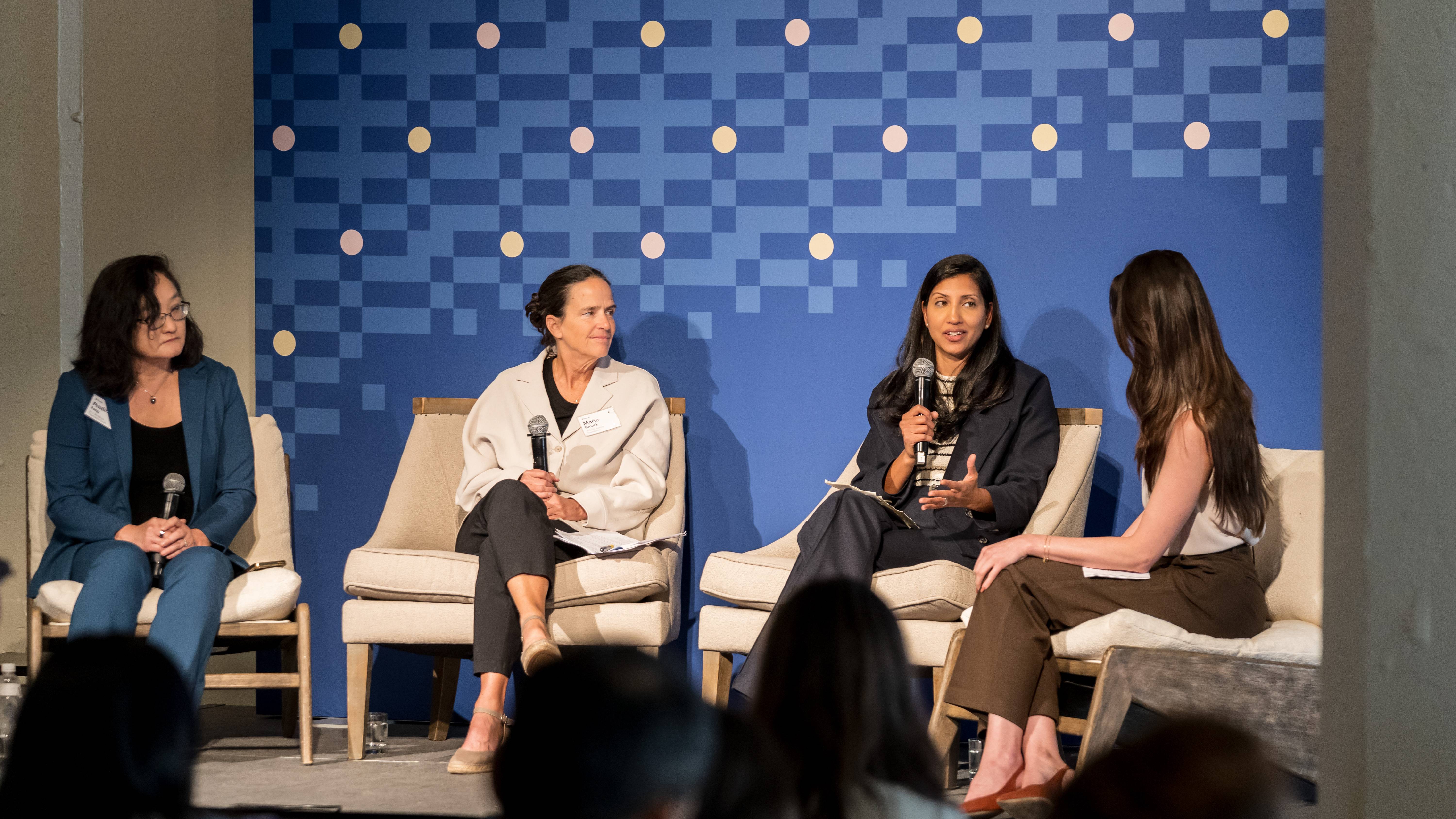
When it comes to AI: “Will we choose the hard right over the easy wrong?” That’s the question former Vice President Al Gore asked of funders, philanthropists, and technologists at Fund.AI.
After two days of panels, fireside conversations, and hands-on workshops spent with 150+ bold thinkers and builders, we have a better answer: AI for humanity is no longer a slogan — it’s a movement. The philanthropic sector is choosing to address what is hard.
At Fund.AI, a convening hosted by the Patrick J. McGovern Foundation and Fast Forward, we explored how AI can be harnessed for humanity — and the role philanthropy plays in actualizing AI’s potential for good. From responsible AI to radical collaboration, the discussions illuminated how the next decade of AI will be shaped by the partnerships we forge today.
Here are five big ideas that defined Fund.AI, and what they mean for the future of AI for humanity.
“This is our time to lean in. Environmental organizations can now work through reams of documents that help them catch banks in acts of greenwashing. [Global health organizations] can now distribute low-cost diagnostic tools that can get people treatment faster. We can level the playing field… in a moment in which we’re fighting to keep our institutions healthy and strong.”
1. Nonprofits Need Philanthropy’s Support Navigating AI
Nonprofits deeply care about serving their beneficiaries and will do whatever it takes to meet their missions, often with limited resources and boundless commitment. Stacy Palmer, CEO of The Chronicle of Philanthropy, in her conversation with Vilas Dhar, President of the Patrick J. McGovern Foundation, gave an overview of what nonprofits say they most need at this moment.
When the Chronicle asked, “What are some of the kinds of things philanthropy can do to help you?,” the top answer — unsurprisingly — was cash. But, Stacy added, “They also want help with nonprofit data hubs, they want tech expertise, they want help with their audits.” More important than anything else, they’re fearful of being left behind in the age of AI.
As Stacy shared: “[Nonprofits] know that technology can make a big difference. That seems like an opportunity we can seize.” She left us with a provoking thought: “If philanthropy doesn’t rise to the occasion, society will lose.” So, how can philanthropy rise to the occasion? Not just with grants, but with collaboration.
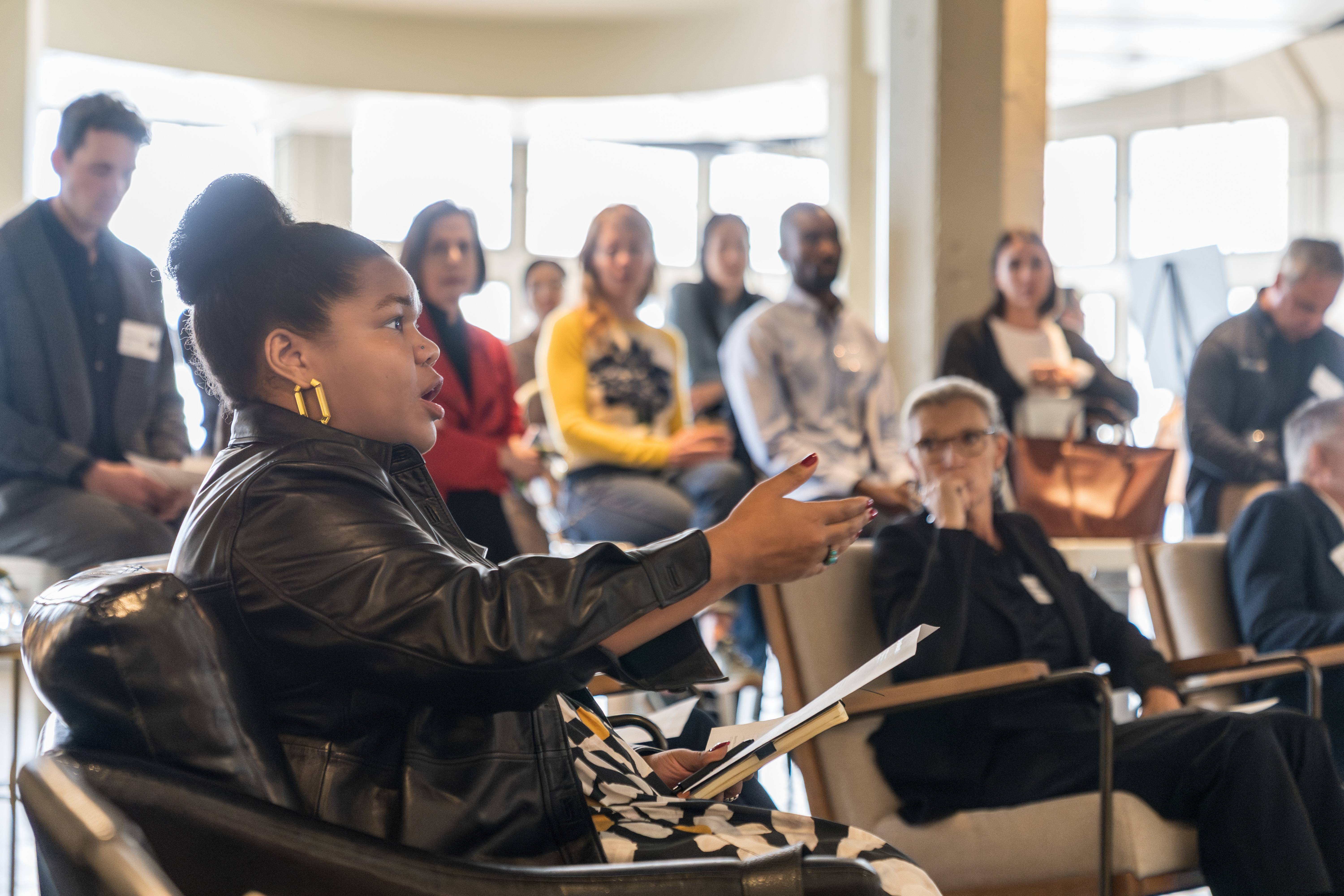

2. Collaboration Is Philanthropy’s Superpower
Maggie Johnson, Global Head of Google.org, revealed that collaboration isn’t just a funding strategy — it’s a reimagining of what impact looks like in the AI era. Her words mirror a key call from Google.org and Fast Forward’s new whitepaper, The Philanthropic Reset: Engineer radical cross-sector partnership.
Maggie challenged us to go further than we ever have in collaborating for real impact. She described creative models, like FireSAT, a collaboration of funders, governments, and AI experts building a constellation of satellites capable of identifying wildfires within twenty minutes. It’s this kind of bold, cross-sector partnership that defines this new era — one where no single organization owns the solution, but all share in the responsibility to build it. Maggie reminded the room that collaboration is philanthropy’s superpower.
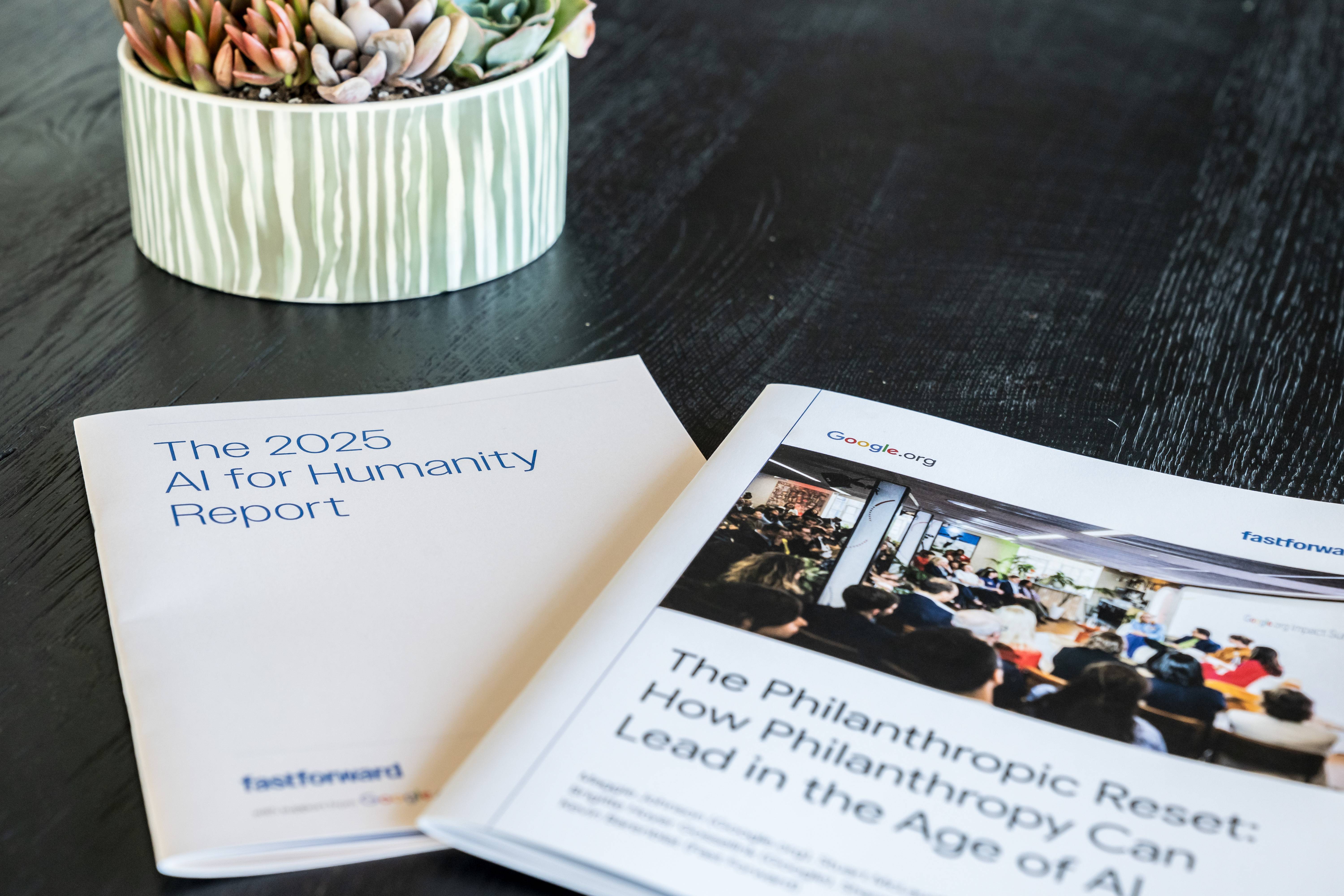

In another session, AI funding collaboratives like NextLadder and Opportunity AI showed what this next generation of partnership can look like in practice. NextLadder, a new initiative backed by leading philanthropists like Ballmer Group and Gates Foundation, is deploying Anthropic’s Claude models to social innovators tackling challenges in economic mobility. It’s intentionally timebound — designed to catalyze a sustainable market for social innovation within the next decade — and rooted in a recognition that philanthropy can’t do this alone. Similarly, Opportunity AI is mobilizing funders to learn together in an effort to ensure emerging tools reach the communities most at risk of being left behind. These efforts offer a glimpse of what’s possible when cross-sector collaboration becomes the default mode of innovation.
That spirit of collaboration echoed in the hallways at Fund.AI, where participants swapped ideas on how to align grantmaking around shared infrastructure needs (yes, we got very big picture), how to co-support grantees to amplify impact, and how to open up compute, data, and talent to nonprofits. Across the board, there was a shared recognition that collaboration isn’t just the future of philanthropy, it’s the only way to meet the scale of this moment.
3. Responsible AI Isn’t Optional
Throughout Fund.AI, one message rang clear: responsible AI is the baseline for trust and progress.
The conversation kicked off with Divya Siddarth, co-founder of the Collective Intelligence Project, who invited us to widen the frame. Responsible AI, she argued, isn’t just about mitigating harm…it’s about who gets to shape the technology itself. Her work brings new voices into the process of training and governing AI models, ensuring that the systems defining our future reflect the diversity of the people they serve.
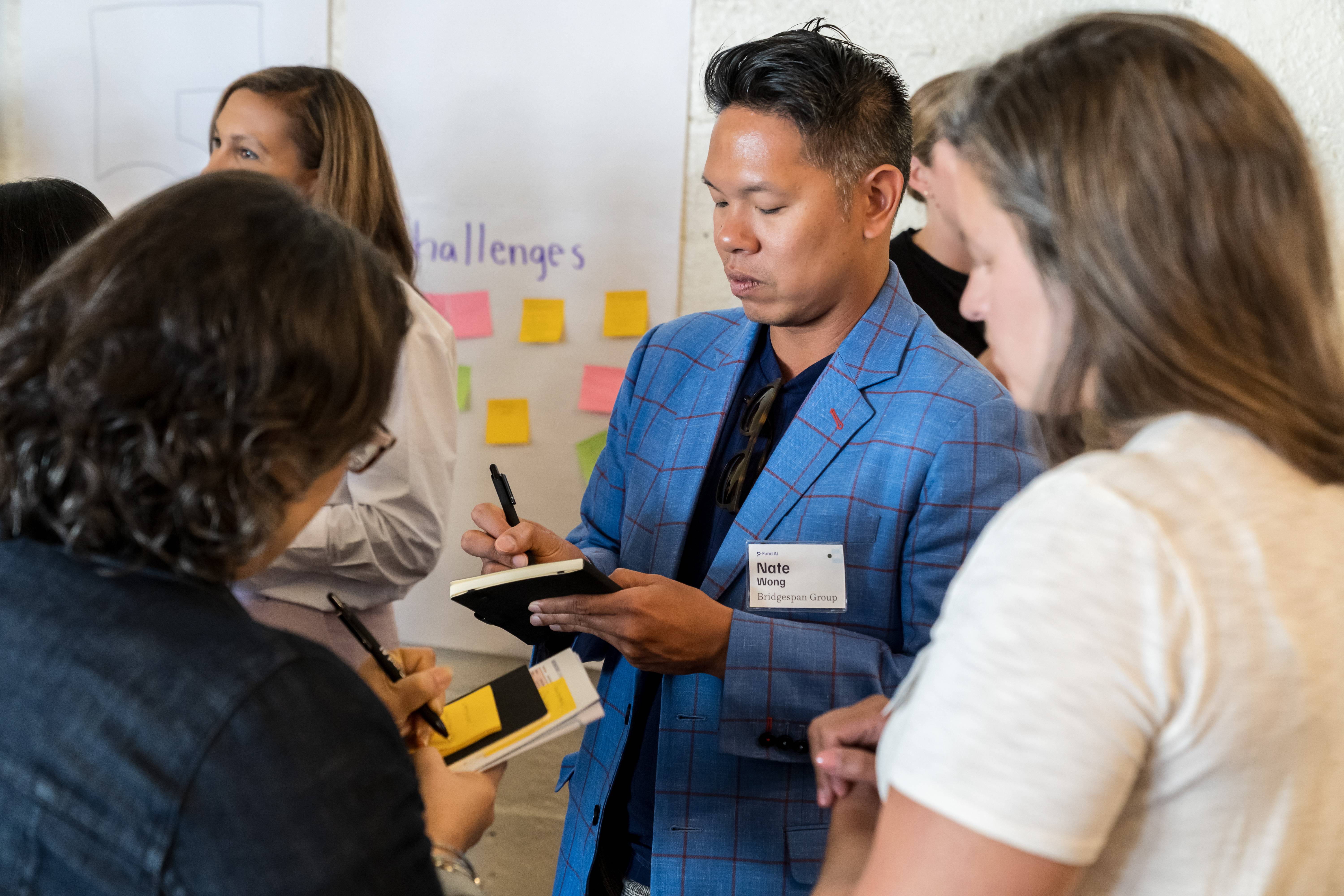

That idea resonated throughout the event. Baratunde Thurston, put it best: “Nothing for us without us.” Largely founded by those proximate to the problem, tech and AI-powered nonprofits (APNs) are often the closest to the problems AI promises to solve. They understand the nuances, the gaps, and the ethical tradeoffs. But too often, those same organizations are absent from the rooms where AI’s future is defined — or constrained by less-than-ideal tools.
They're not letting that stop them from modeling responsible AI practices for the entire industry. Kevin Barenblat shared some findings from Fast Forward's new 2025 AI for Humanity Report: 61% of surveyed AI-powered nonprofits customize LLMs with their own data — a step that can help them tailor tools for the specific communities they serve. Plus, 70% regularly incorporate community feedback into system updates. By centering community voices in development, APNs ensure their technology reflects lived realities and builds trust with the people they serve."
Through an interactive Responsible AI Workshop, we explored what responsibility looks like in practice. The discussion surfaced key points like:
- Keep it human: Every AI system must stay grounded in community needs, with clear points for human input and oversight.
- Get AI-literate: Funders and nonprofits alike must build basic fluency, knowing what questions to ask, and when an AI solution actually fits the problem.
- Stay mission-aligned: The ultimate goal isn’t actually deploying AI, it’s improving results for the people we serve.


4. AI-Powered Nonprofits Are Here to Stay
Several nonprofits offered a glimpse of what it looks like when mission and machine intelligence align. Fast Forward co-founder Shannon Farley highlighted a growing class of founders building AI-powered nonprofits that are mission-driven, product-minded, and structurally built for speed — like Karya, RebootRx, and CareerVillage’s Coach. And we heard from others directly.
Materiom co-founders Liz Corbin and Alysia Garmulewicz shared how their organization is rethinking how we make and use materials. They’re building Materiom AI, a tool that helps companies design natural alternatives to plastics — materials made from things like seaweed, food waste, and mushrooms that can safely return to the earth. What might have taken twenty years of trial and error in a lab can now happen in a fraction of the time. Their open database already connects more than 20,000 researchers and makers in over 100 countries, all sharing recipes for a world where garbage really can feed the soil.
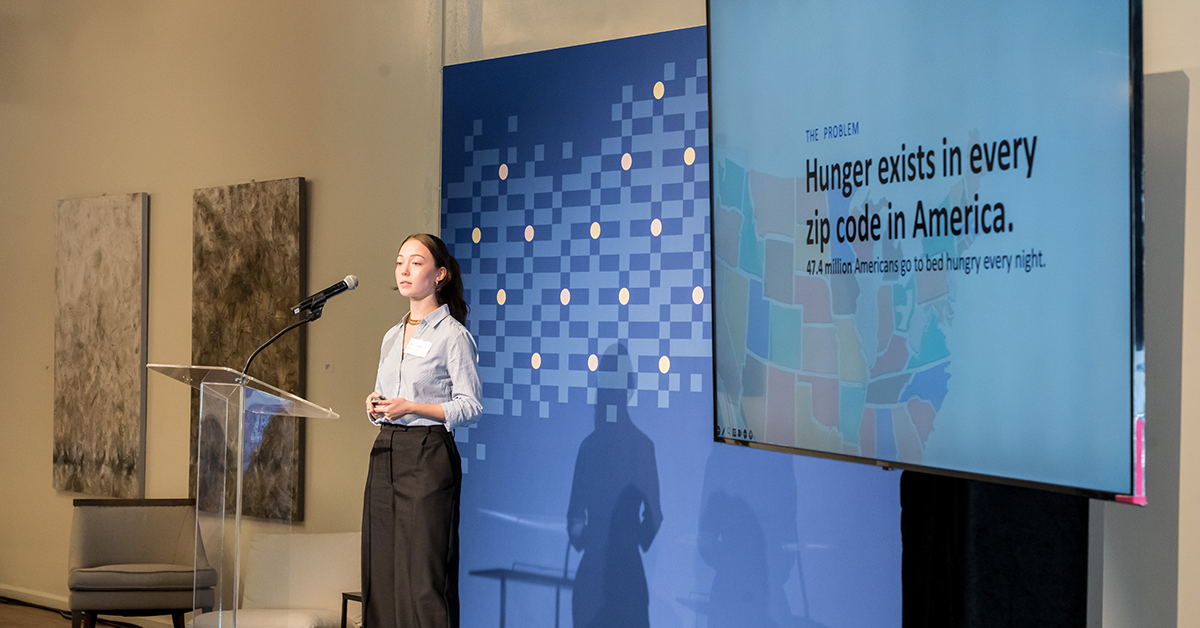

Lemontree founder Kasumi Quinlan shared how her organization uses AI to make food assistance programs actually work for the people who need them. Their technology helps families find nearby pantries that are open, accessible, and welcoming, solving problems that shouldn’t exist in the first place. Each day, 15,000 households get personalized recommendations built from real user feedback and lived experience. The AI mirrors the thoughtfulness of a social worker, scaling empathy rather than replacing it.
AI is the ingredient helping these solutions grow into systems that can reach millions. As ReFED President Dana Gunders put it: “We use data to model solutions — and now AI helps us find and test thousands more. It’s already helping us see things we might’ve missed before. It feels like an unlock — and we’re just getting started.”
AI-powered nonprofits prove that when purpose leads and technology follows, AI can be a force for rebuilding systems that truly work for people and the planet.
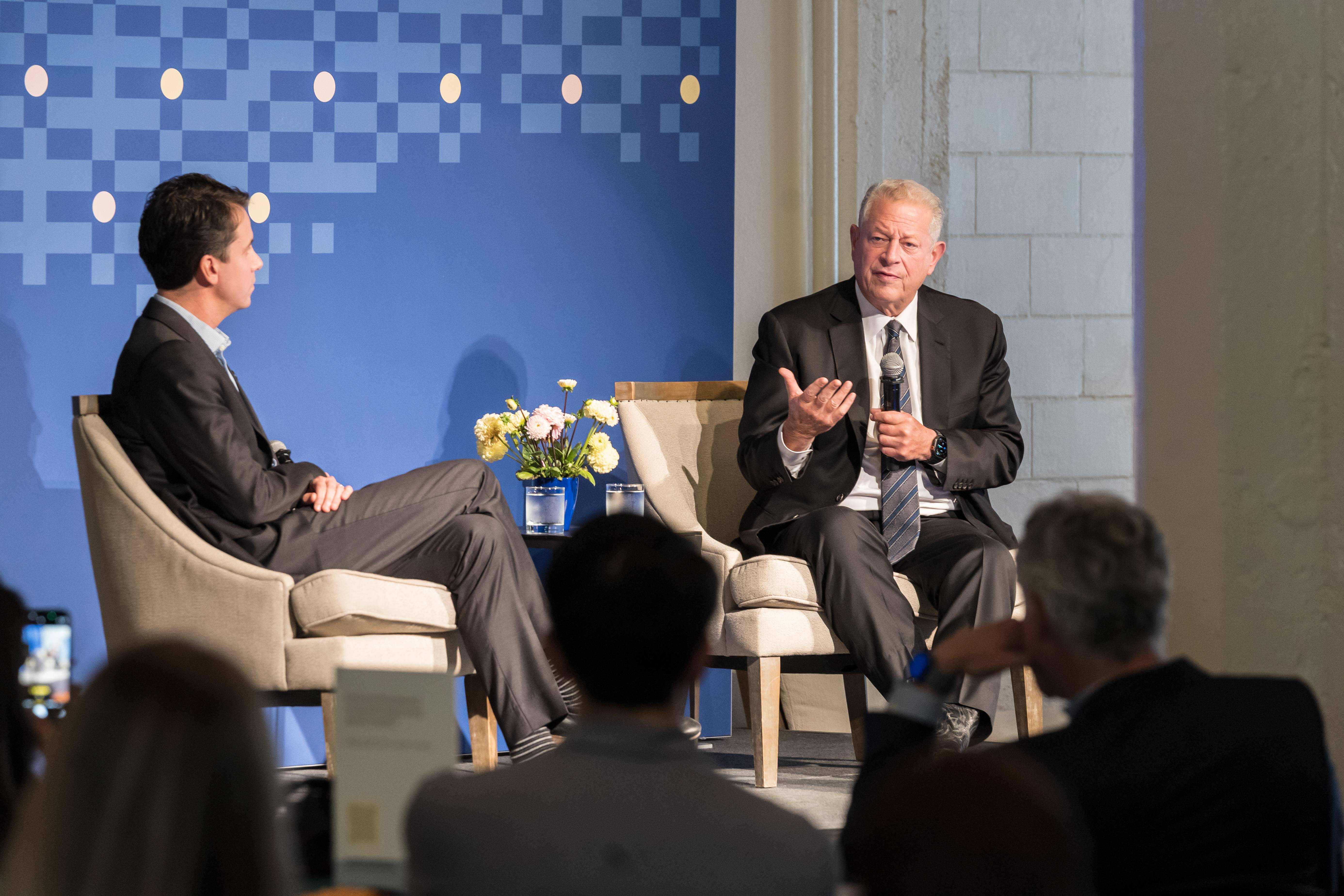

5. AI Can Power Systems Change
We kicked off Fund.AI with a mapping the room exercise where funders physically placed themselves in the room on a scale of 1-10 where they are on the AI learning curve. Don’t worry, nobody stood by themselves. Actually, attendees were spread equally across each station, surrounded by peers.
At each number, funders surfaced common challenges and identified opportunities to collaborate and support one another. It set the tone for an ongoing conversation: as a funder, you don’t need to be a technological expert on AI. But you need to understand it enough to know what questions to ask your grantees and be able to vet new, potentially groundbreaking ideas.
In a later session, Naomi Morenzoni, SVP of Climate & Innovation Philanthropy at Salesforce.org, went a step further. She talked about how funding AI might require systemic changes to how grantmakers work, too: “We need to lean in as funders into our own upskilling. We are taking AI adoption, not as an adoption-challenge, but as a change management problem. How do we think differently about our own work… and what gets deployed to an agent? As funders, we need to lean in and understand those solutions for ourselves.”
When Former Vice President Al Gore closed out Fund.AI, he reminded the room: “You can only manage what you measure.” This phrase — often used in the business context — is relevant here on two levels. First, his Climate TRACE initiative uses AI to track and measure over 660M greenhouse gas emission sources to understand where global warming pollution comes from and turn complexity into coordinated global action.
But also, as a funder, you can't fund what you don't understand. For some, Fund.AI was a big first step. For others, it was the next step of their journey. For all, it was an opportunity to become more familiar with funding AI for humanity.
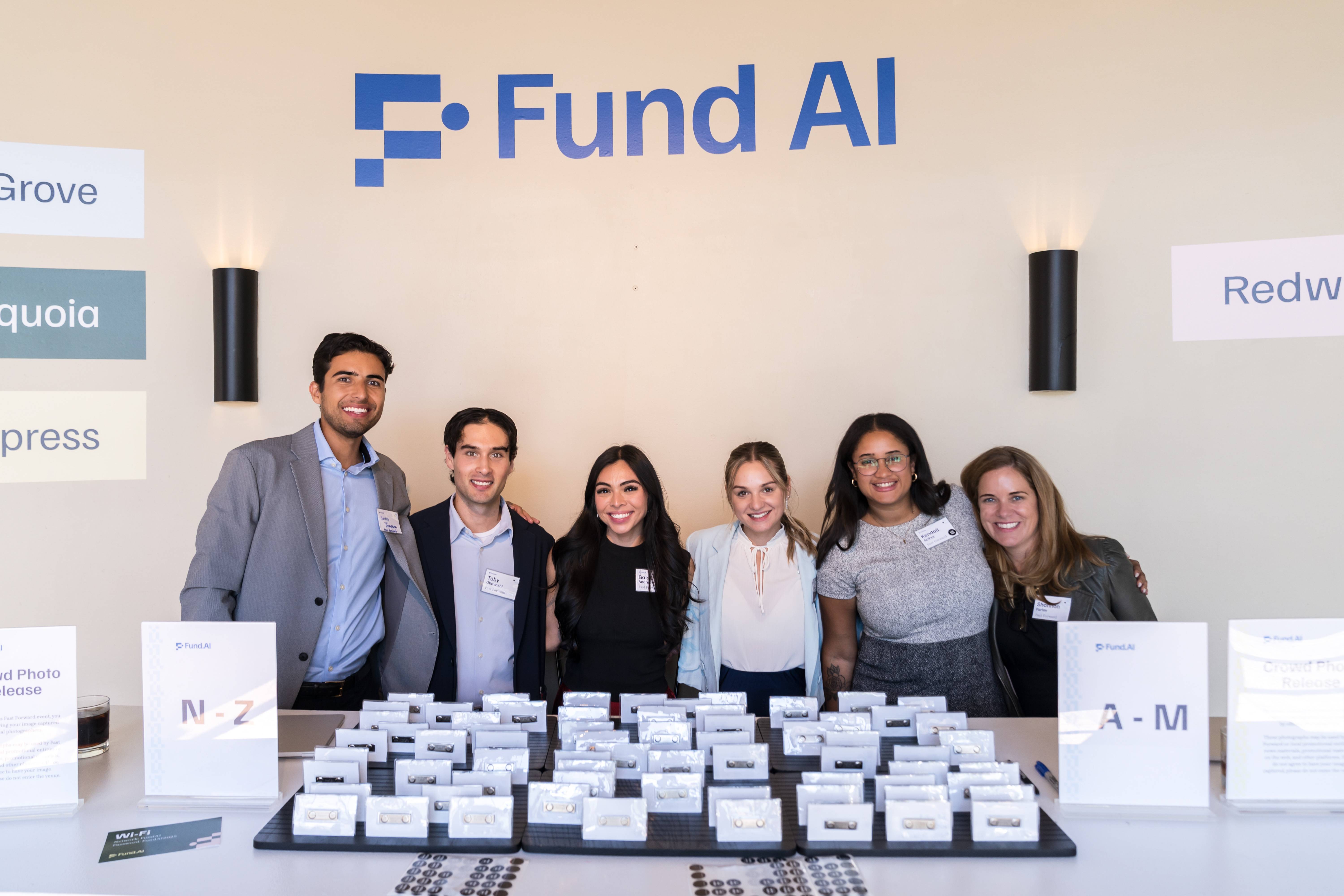

Conclusion
If Fund.AI proved one thing, it’s that AI for humanity is no longer a slogan — it’s a movement. The sector is ready. The future of AI for humanity will be written by those willing to build it together. As we look ahead, the challenge isn’t just whether we’ll fund AI for good, but whether we’ll do so boldly enough to shape the systems that shape us. The work starts now.